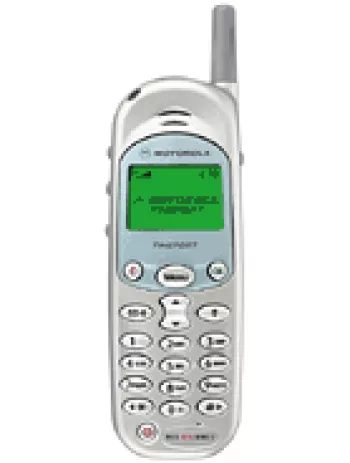
Introduction
The Motorola MT810lx is a smartphone that was introduced to the market in 2010. Although it has been discontinued, it remains a significant example of the evolution of mobile technology during the early 2010s. This device, operating on the Android-based OPhone 2.0 system, showcased several standard features of its time alongside unique elements that set it apart from competitors.
Design and Build
The design of the Motorola MT810lx reflects the typical aesthetics of early 2010s smartphones. It has dimensions of 108.6 x 55.5 x 18.1 mm, making it a compact device with a solid feel in the hand. Weighing in at 173 grams, it was considered somewhat heavy compared to its contemporaries. The phone supports a Mini-SIM card, which was standard at the time.
Display
The MT810lx features a 3.2-inch TFT resistive touchscreen with 16 million colors, offering a resolution of 480 x 854 pixels. With a screen-to-body ratio of approximately 46.8%, the display produced crisp and vivid visuals for its time, although limited by the resistive touchscreen technology compared to modern capacitive screens.
Performance
Under the hood, the device is powered by a TI OMAP 3430 chipset, featuring a 600 MHz Cortex-A8 CPU and a PowerVR SGX530 GPU. This combination delivered satisfactory performance for day-to-day tasks and modest gaming requirements of the era. With 512MB of RAM, multitasking was possible, though somewhat limited by today's standards.
Operating System
The smartphone runs on an Android-based OPhone 2.0 operating system. OPhone was a Chinese variant of Android that included modifications for the local market, providing the user with a familiar yet distinct user experience compared to standard Android ROMs available globally at that time.
Camera
The Motorola MT810lx features a 5-megapixel rear camera equipped with autofocus and an LED flash. It captures video at 720p at 20 frames per second. Given the period, this capability was notable and allowed users to document experiences with relatively good quality. The front VGA camera was geared towards video calling, which was gaining popularity then.
Battery Life
A removable Li-Ion battery with a capacity of 1140 mAh powers the MT810lx. Though not substantial by current standards, it provided a stand-by time of up to 190 hours and a talk time of up to 7 hours, adequate for moderate users at that time.
Connectivity
The phone supported GSM and HSPA technologies, operating over 2G and 3G networks. It featured Wi-Fi 802.11 b/g, allowing for basic wireless internet connectivity, and Bluetooth 2.1 with A2DP for wireless audio streaming. GPS and A-GPS were included for navigation, and a stereo FM radio with RDS provided entertainment on the go. A microUSB 2.0 port allowed for charging and data transfer.
Memory and Storage
The Motorola MT810lx came with 512MB of internal storage, and users could expand the storage via a microSDHC card slot. This expansion capability was crucial for users who wanted to store more apps, songs, photos, and videos beyond the pre-installed storage capacity.
Sound and Multimedia
Multimedia features included a loudspeaker and a 3.5mm headphone jack, ensuring compatibility with most earbuds and headphones of the time. Music and radio enthusiasts appreciated the inclusion of FM radio, which expanded the device's entertainment capabilities without the need for a data connection.
Sensors and Browser
Equipped with basic sensors such as an accelerometer and compass, the phone supported basic navigation and orientation functionalities. The device's HTML browser provided access to web content, albeit at slower browsing speeds compared to modern devices.
Conclusion
The Motorola MT810lx is a showcase of the technological advancements of its era. Although it was eventually discontinued, its feature set provides historical insights into the smartphone industry's evolution and user preferences during the early 2010s. Today, the MT810lx serves as a nostalgic reminder of how far mobile technology has come.
Key Features of Motorola MT810lx
- Supports GSM and HSPA technology for wide network compatibility.
- Features a 3.2-inch TFT resistive touchscreen with 16M colors and high resolution (480 x 854 pixels).
- Operates on an Android-based OPhone 2.0 OS with a TI OMAP 3430 chipset and a 600 MHz Cortex-A8 CPU.
- Equipped with a 5 MP main camera with autofocus and LED flash, capable of 720p video recording.
- Includes a VGA front camera for video calling.
- Supports microSDHC card expansion for additional storage.
- Wi-Fi and Bluetooth 2.1 with A2DP for seamless connectivity.
- Built-in GPS and A-GPS for accurate location services.
- Offers entertainment options with stereo FM radio and RDS.
- Features standard 3.5mm audio jack and a loudspeaker for music and calls.
- Includes essential sensors like an accelerometer and compass for enhanced usability.
- Furnished with a removable Li-Ion 1140 mAh battery, providing up to 7 hours of talk time.
Disadvantages of Motorola MT810lx
- Discontinued status, making it unavailable for new purchases or support.
- TFT resistive touchscreen is less responsive than capacitive touchscreens.
- Low screen-to-body ratio (~46.8%), resulting in less screen space compared to modern devices.
- Limited processing power with a 600 MHz Cortex-A8 CPU, which is insufficient for handling modern apps and multitasking effectively.
- Limited memory with only 512MB RAM, which restricts performance and app usage.
- Video recording capability is limited to 720p at 20fps, which is subpar by modern standards.
- VGA resolution front camera is inadequate for high-quality selfies or video calls.
- Older Bluetooth version (2.1), lacking modern enhancements for faster and more reliable connectivity.
- Removable Li-Ion 1140 mAh battery may offer limited battery life, especially with age.
- Only supports Wi-Fi 802.11 b/g, lacking faster and more reliable modern Wi-Fi standards.
- Mini-SIM slot instead of the more common micro or nano-SIM slots found in newer devices.

View Also
More Phones
All Rights Reserved +14266 Phones © Mobilawy 2025

























